Pants or jeans? This simple question can stir up more confusion than it should.
The main difference between pants and jeans lies in fabric and formality—pants are usually dressier and made from smoother fabrics, while jeans are denim-based and more casual.
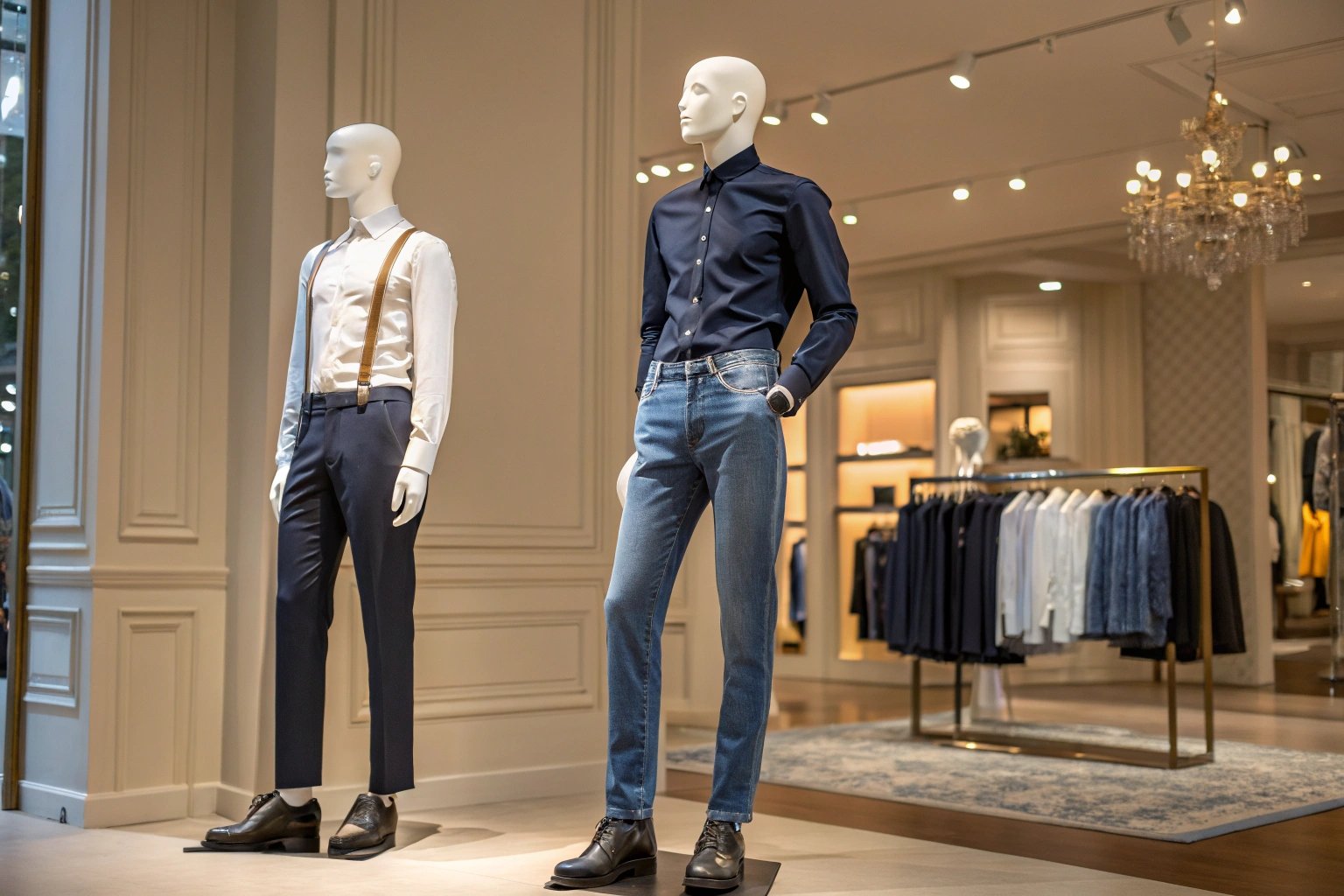
Some people say jeans are just pants. Others insist they’re different. I used to think the same. I’d grab whichever looked clean in the closet and call it a day. But if you’re managing a fashion retail business or planning a new collection, knowing the difference is more than just trivia. It can help you target your customers better and avoid stocking the wrong styles.
What makes jeans different from pants?
Not all pants are jeans—but all jeans are pants. Confusing? It doesn’t have to be.
Jeans are a type of pants made from denim, usually with a more casual look and feel. Pants is the broader category, which includes slacks, chinos, and dress trousers.
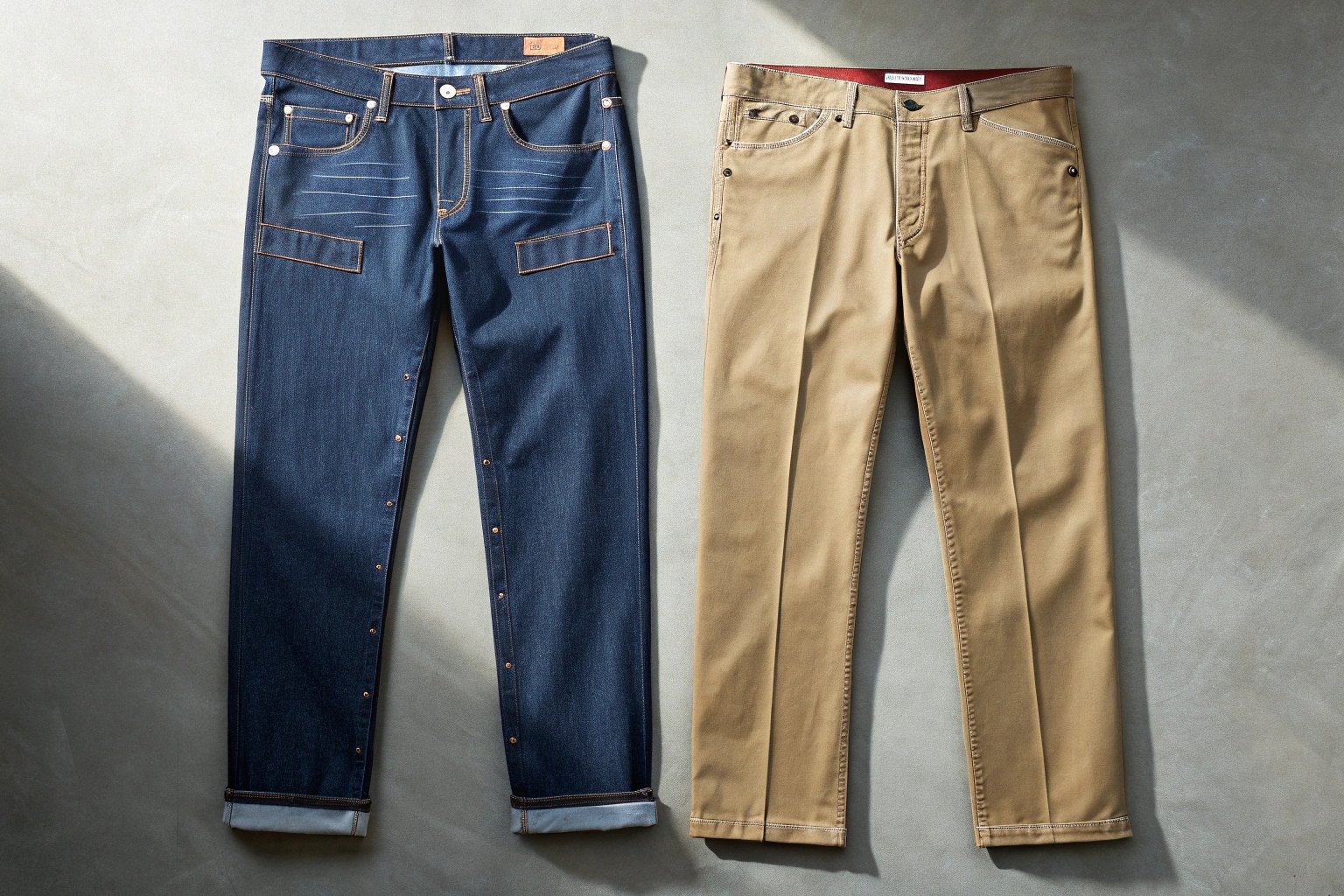
Jeans have roots in workwear. They were tough, meant to survive hard labor. The classic indigo dye and rivets were all about function. Over time, they became a symbol of casual style. On the other hand, pants (or trousers, as they’re called in the UK) were tied to formality—tailored looks, pressed creases, and smooth fabrics like wool, cotton twill, or synthetics.
Here’s a simple table to break it down:
| Feature | Jeans | Pants |
|---|---|---|
| Fabric | Denim | Cotton, wool, synthetics |
| Fit | Often relaxed or skinny | Often tailored or straight |
| Style | Casual | Can be casual or formal |
| Colors | Mostly blues, blacks, greys | Wide range, incl. khakis |
| Origin | Workwear | Formalwear |
Are jeans still trendy today?
Many wonder if jeans have lost their place in modern wardrobes.
Yes, jeans are still trendy, but now they share the spotlight with joggers, leggings, and wide-leg pants thanks to changing fashion and comfort trends.
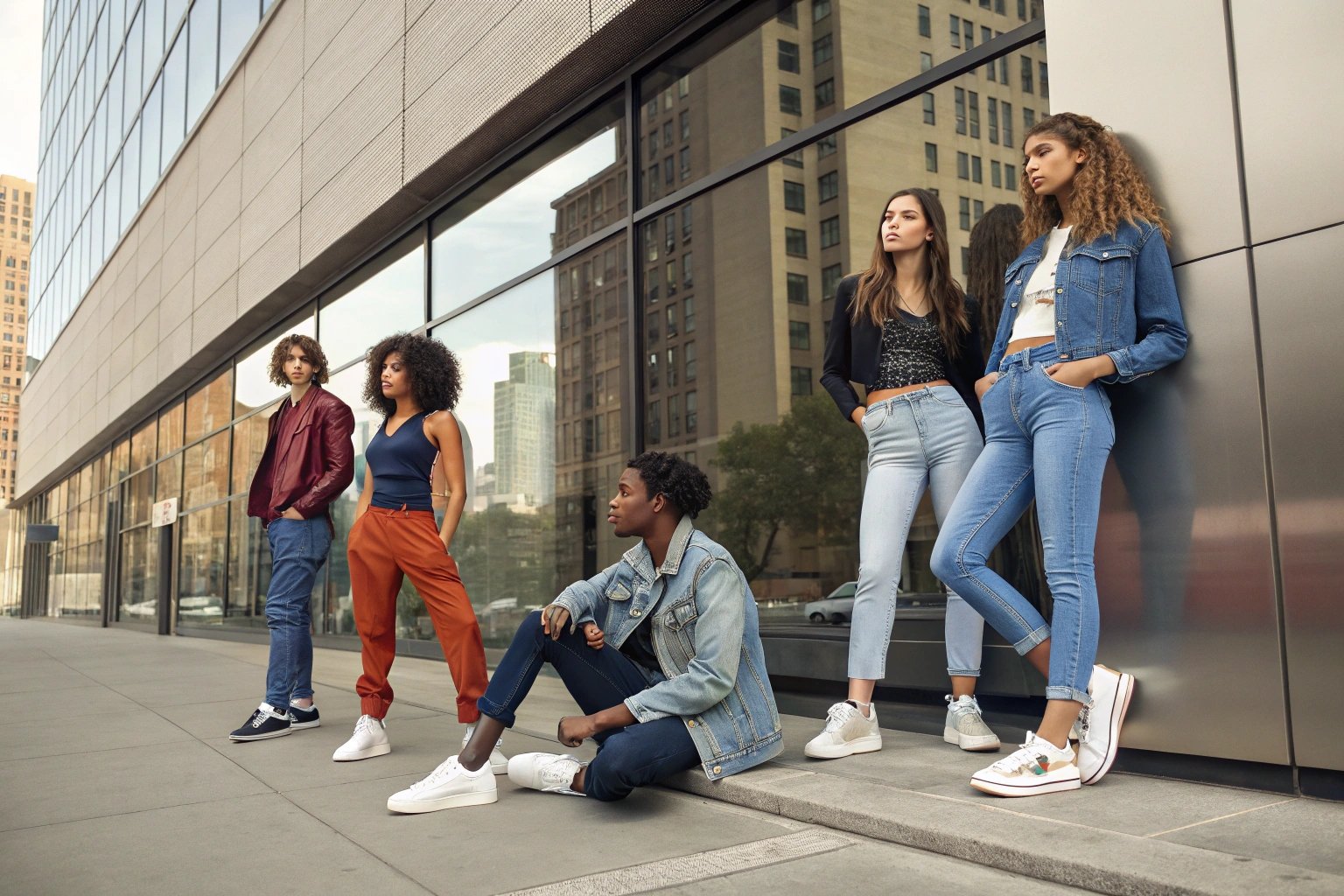
Jeans have reinvented themselves over the years. Skinny, bootcut, flared, distressed—each trend has had its moment. But what’s really changed is how people wear them. Athleisure and work-from-home shifts made comfort king. That’s where joggers and soft pants come in. Still, denim remains a staple.
We’ve seen a rise in denim innovation too—stretch denim, organic cotton blends, acid wash effects. At Yoplook, we’ve produced denim-look joggers with spandex to bridge fashion and comfort. Retailers who mix classic jeans with modern alternatives see better engagement, especially from younger buyers.
What kind of pants do modern consumers prefer?
As tastes shift, buyers are looking for more than just denim.
Consumers today prefer versatile, comfortable pants—like leggings, joggers, and chinos—that can transition from casual to active to loungewear.
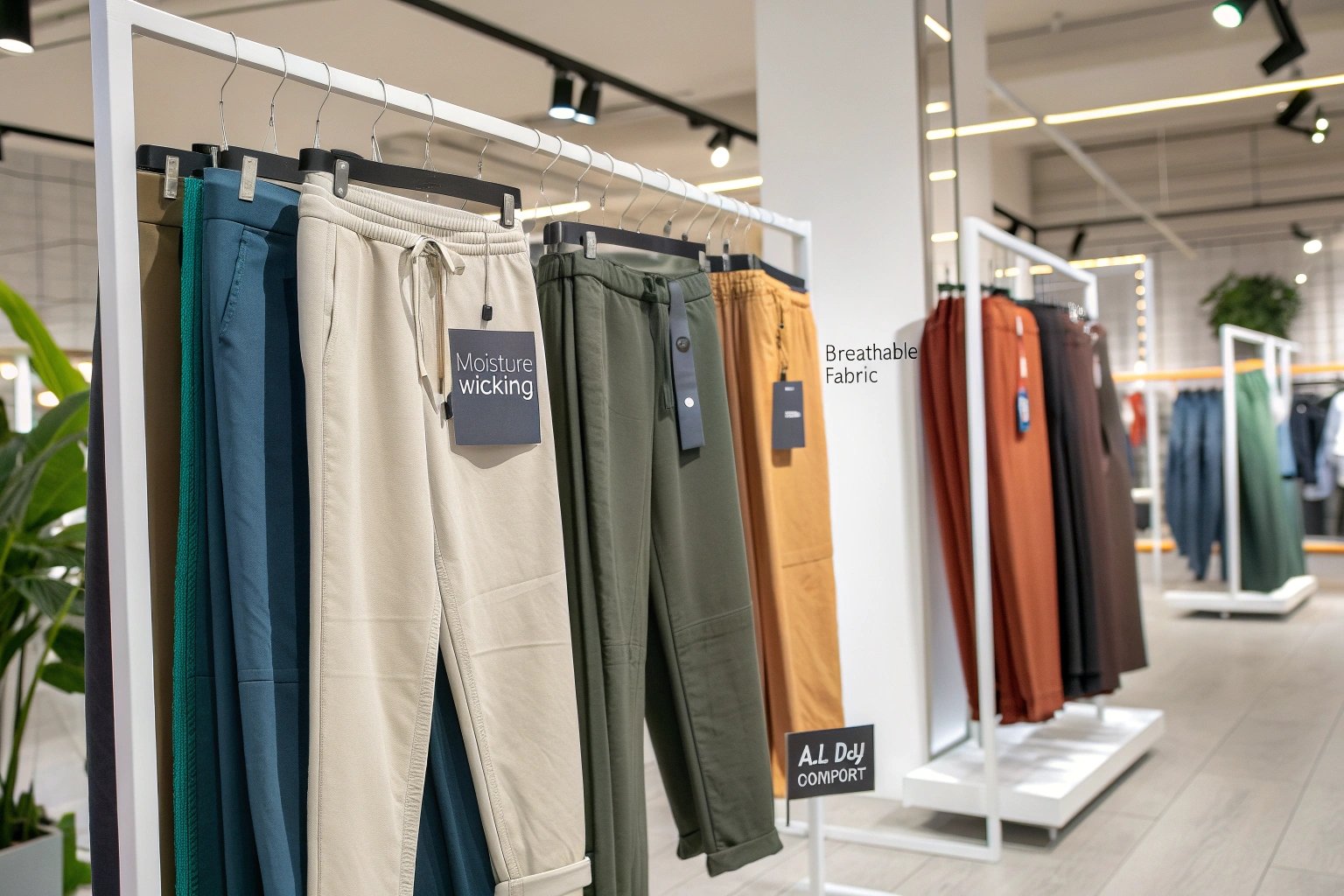
When we review our quarterly orders, we notice leggings and tracksuits consistently rank high, especially among our U.S. and U.K. clients. That doesn’t mean jeans are fading, but they now compete with other strong contenders.
A lot of end-users want breathable, moisture-wicking fabrics—especially in hot or humid regions. Others want pants that fit well, look smart, and feel like pajamas. That’s a tall order. But it’s why we design pants in blended fabrics like polyester-spandex, balancing structure and stretch.
Here’s a summary of popular pants types today:
| Type | Key Features | Popular Among |
|---|---|---|
| Leggings | Stretchy, breathable, active-ready | Fitness-focused consumers |
| Chinos | Smart-casual, cotton-based | Urban professionals |
| Joggers | Relaxed fit, drawstring waist | Gen Z and millennial buyers |
| Dress Pants | Tailored, formal | Office wear customers |
Which is more versatile: pants or jeans?
Both pants and jeans adapt well—but one edges out slightly.
Pants are more versatile than jeans because they include formal styles and casual ones, while jeans mostly stay in the casual zone.
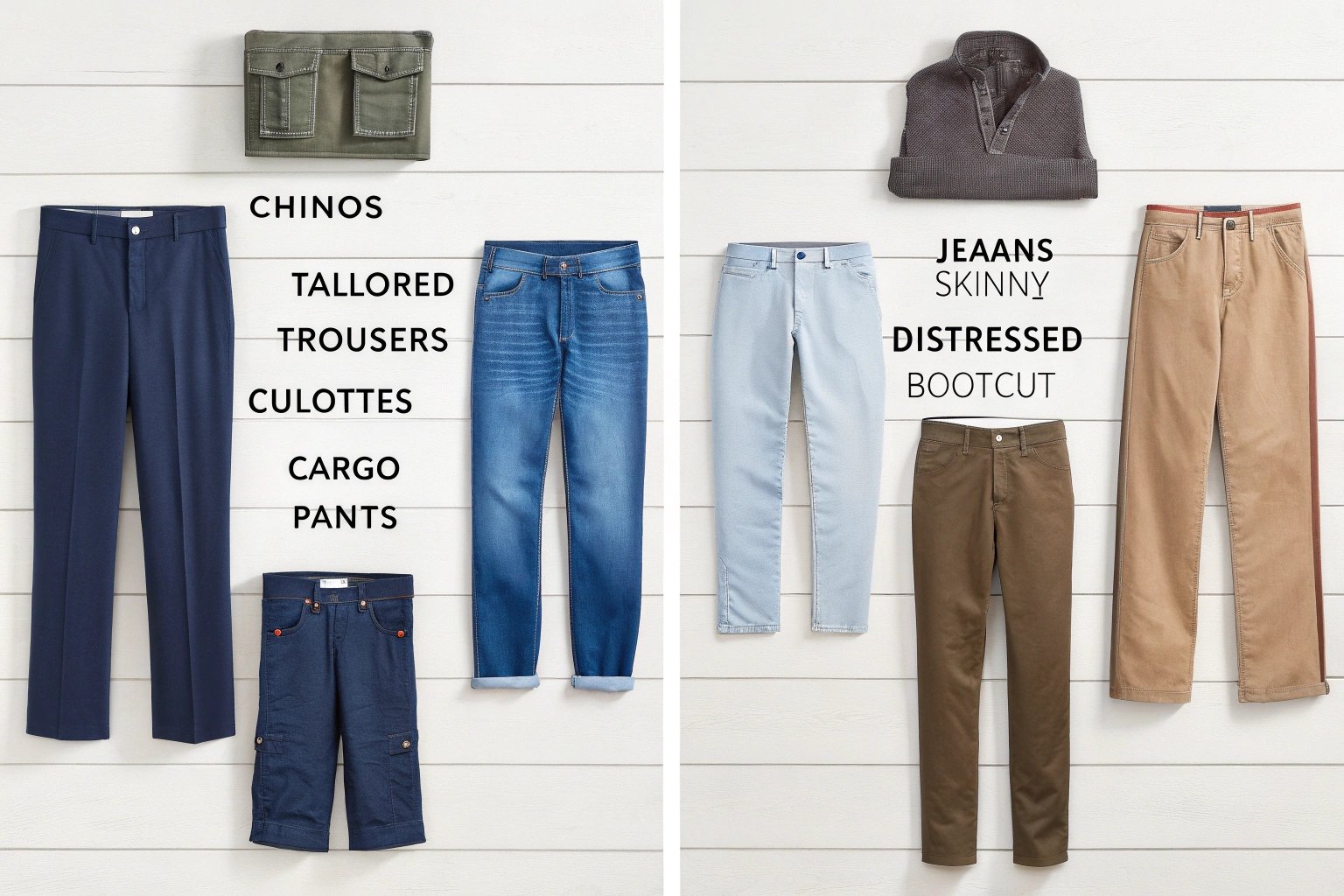
I’ve seen retailers get stuck offering just denim, only to lose out on dressier trends. Chinos, culottes, cargo pants—these allow customers to build work-to-weekend wardrobes. Jeans can be dressed up, yes, but they rarely replace tailored trousers at work events or formal dinners.
Versatility also means reaching more customers. A pants collection can cover school uniforms, business attire, and lounge sets. That’s a wide net. Jeans mainly appeal to casualwear buyers. This is why I always suggest clients add a few solid non-denim options to balance their collection.
Do pants or jeans cost more to produce?
You may think denim is expensive, but that’s not always true.
Jeans often cost more to produce than standard pants due to thicker fabrics, dyeing processes, and finishing details like rivets and washes.
In our factory, making jeans takes more time. The denim is heavy. It requires prewashing, fading, and sometimes distressing. Add to that rivets, double stitching, and reinforced seams. Pants, especially chinos or joggers, are simpler. They’re usually cut, sewn, and pressed in fewer steps.
Still, some high-end pants with tailored cuts and special fabric blends can match or exceed denim costs. But for standard production, jeans usually take more labor and processing. For businesses with tight margins, this matters. That’s why we advise clients to review their fabric and finish expectations before setting retail prices.
Which is better for your brand: jeans or pants?
Not every collection needs denim—but every collection needs pants.
Pants offer broader options for branding, especially when you’re targeting different lifestyles and customer needs, while jeans tend to anchor a single style voice.
If your brand is built on rugged, youthful energy, jeans fit perfectly. But if you serve professionals, fitness lovers, or multi-age groups, pants give more creative room. You can play with materials, fits, cuts, and even lengths—without getting boxed into one look.
We’ve helped brands develop full bottom collections starting with joggers and wide-leg pants. One client expanded from denim basics into flowy office slacks, and their average order value jumped. That kind of flexibility shows why pants are a smart long-term product base.
Conclusion
Pants and jeans may look similar, but knowing when—and why—to choose one over the other is what gives your brand the edge.

